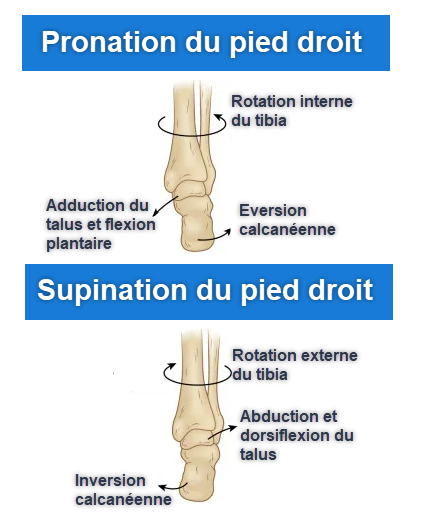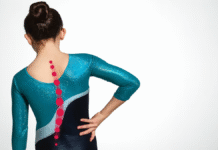When the foot is on the ground is pronated, the talus rotates medial to the fixed calcaneus. As the talocrural joint does not allow for rotation, the leg must rotate medially with the talus. Similarly, when the weight-bearing foot is supinated, the talus rotates laterally, resulting in lateral rotation of the leg.
These rotational movements of the leg then create a rotational force or stress on the knee joint and can affect the health of the knee joint. There are more cases of pronation than supination, the knee joint is often under medial rotational stress from below. Since the knee joint does not allow for rotation when it is extended, much of this (medial) rotational force will be transmitted to the hip joint, affecting the function and health of the hip joint.

This can be easily seen in a person by observing the orientation of the patella when pronating the foot (the patella follows the femur). In a patient with excessive pronation, there is a medial rotation of the patella. For these reasons, correction of an over-pronated foot can be extremely important in correcting knee and hip joint problems.
Solution number 1:
Recommend orthotics
Solution number 2:
Recommend strengthening the supination (i.e. inversion) muscles of the foot at the subtalar joint.
Solution 3:
Strengthen the lateral rotation muscles of the hip joint. If these muscles are stronger, they can help to reduce the degree of medial rotation of the thigh, which in turn would reduce the medial rotation of the leg and talus, thus reducing the amount of pronation movement that occurs at the subtalar joint.

















